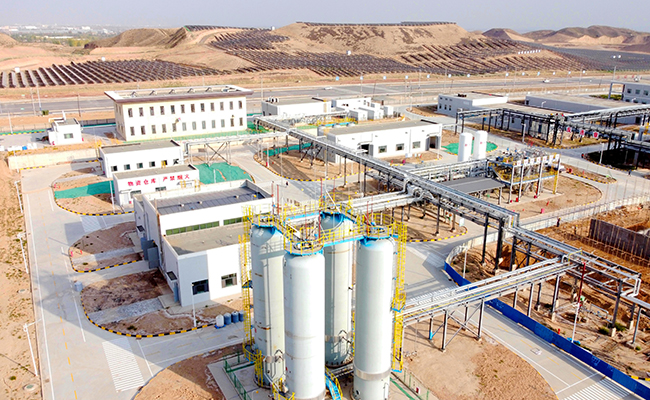Nov 4 2020
China exhibits immense potential for promoting renewable energy. To achieve the goal of sustainable development, the two crucial issues to be addressed are the reduction of carbon emissions and the replacement of fossil fuels with renewable energy.
 The plant of “Liquid Solar Fuel Production Demonstration Project.” Image Credit: Dalian Institute of Chemical Physics.
The plant of “Liquid Solar Fuel Production Demonstration Project.” Image Credit: Dalian Institute of Chemical Physics.
A team of researchers under Prof. LI Can from the Dalian Institute of Chemical Physics (DICP) of the Chinese Academy of Sciences and their collaborators recently industrialized the liquid solar fuel production via the “Liquid Solar Fuel Production Demonstration Project.”
As a first step, commercial photovoltaic technology was used to produce electric power. Then, independently created alkaline water electrolysis catalysts were used to synthesize renewable hydrogen. Finally, a carbon dioxide hydrogenation catalyst was used to synthesize methanol. Due to the steps involved, the produced liquid solar fuel came to be known as “liquid sunshine.”
It is a new way for the large scale production of green liquid fuels with renewable energy.
LI Can, Professor, Dalian Institute of Chemical Physics, Chinese Academy of Sciences
One of the main novel technologies involved in the project is the cost-effective, efficient, and long-lasting electrocatalyst for alkaline water electrolysis during the synthesis of hydrogen. This has been accepted as the best electrocatalyst developed to date for large-scale alkaline water.
The production capacity of the facility was more than 1,000 standard cubic meters of hydrogen within an hour while using a single set of industrial electrolytic cells. Moreover, the unit consumption of hydrogen energy was minimized to below 4.3 kilowatt-hours per cubic meter.
The other novel technology is the cost-effective, high-stability, and high-selectivity carbon dioxide hydrogenation catalyst used for producing methanol. The zinc oxide/zirconium oxide bimetallic oxide solid solution catalyst had realized green methanol production of 1,000 tons/year.
The selectivity of methanol increased to 98%, while the methanol content in the produced fuel increased to 99.5%. Furthermore, the catalyst was found to be highly resistant to sintering and poisoning.
The plant used for the “Liquid Solar Fuel Production Demonstration Project” was made of three fundamental units: first, solar photovoltaic to produce renewable electricity, alkaline water electrolyzer to synthesize green hydrogen, and carbon dioxide hydrogenation to produce methanol.
With a total power of 10 MW, the photovoltaic power station supplied the electricity needed for the alkaline water electrolyzer to produce hydrogen, which was then used in the end station for hydrogenation of carbon dioxide to finally synthesize methanol.